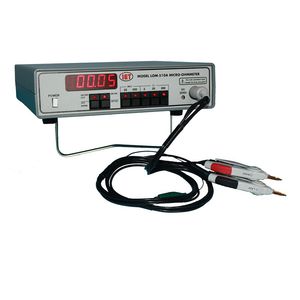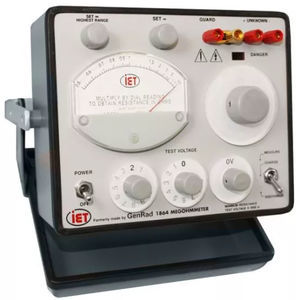
Bench-top megohmmeter 1865+for the aeronautical industry
Add to favorites
Compare this product
fo_shop_gate_exact_title
Characteristics
- Mobility
- bench-top
- Domain
- for the aeronautical industry
- Resistance range
Min.: 1 kOhm
Max.: 10,000,000 kOhm
Description
The 1865 + Megohmmeter/IR tester, with digital display, is used for high accuracy measurements of insulation resistance on a wide variety of components, materials and electronic devices. Resistance values greater than 100 TΩ can be measured with a basic accuracy of 0.5% at DC voltages up to 1000 V.
A programmable limit makes the megohmmeter ideal for pass/fail testing in a production environment and is also adaptable for use in automated system applications with its included RS-232 Interface or optional IEEE-488 interface adapter.
Precision Measurements: The IET Labs 1865 + Megohmmeter provides resistance measurement capability from 1 kΩ to 100 TΩ (test voltage dependent) with a basic accuracy of 0.5%. To meet test requirements for a wide range of devices, the test voltage is fully programmable up to 1000 Vdc. Sensing the proper resistance measurement range is done automatically, thus eliminating setup errors; and in order to eliminate lead or fixture errors, the operator can easily initiate an automatic zeroing routine of test leads.
Easy to use: The 1865+'s menu programming system is significantly improved, simple controls and indicators combine for efficiency of test and productivity. Its multi-function keypad provides the operator with an easy way to program and make measurements.
Pass/Fail Testing: Measured results are automatically compared to an operator programmed limit for pass/fail testing. Pass/Fail indicator lights or a pass/fail output from the megohmmeter I/O interface provide a clear indication of the measured results.
Catalogs
*Prices are pre-tax. They exclude delivery charges and customs duties and do not include additional charges for installation or activation options. Prices are indicative only and may vary by country, with changes to the cost of raw materials and exchange rates.







